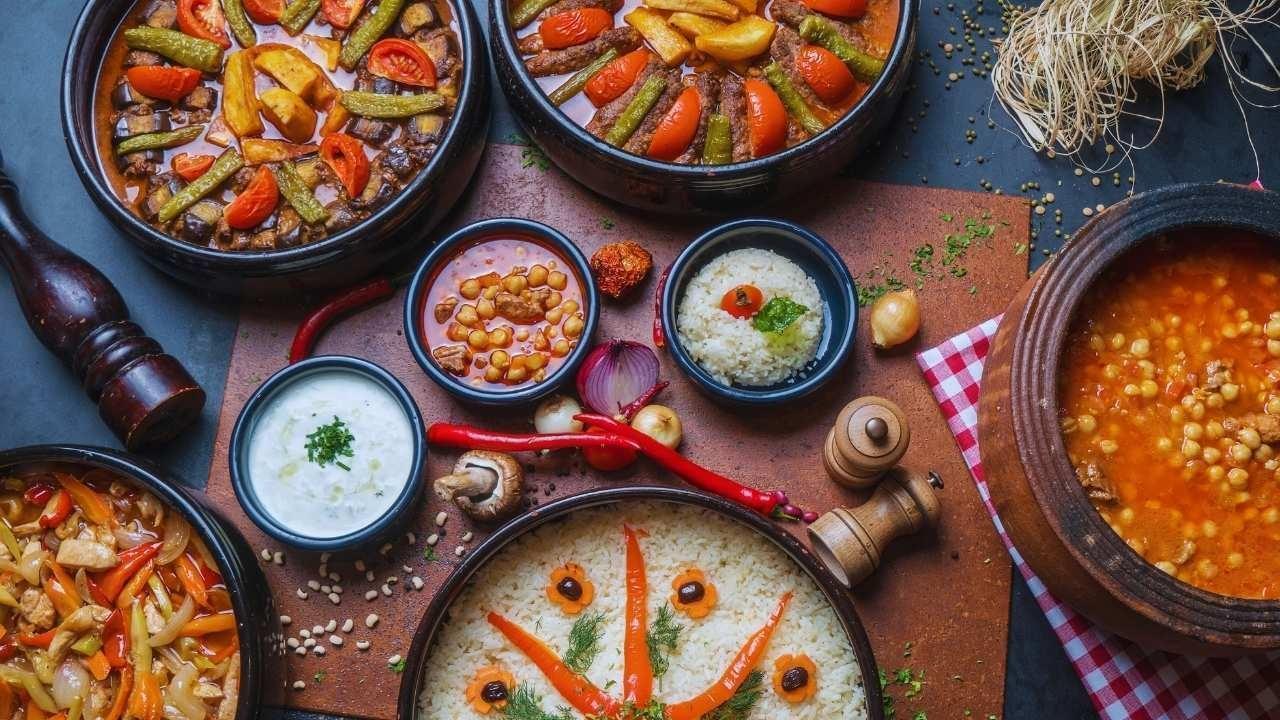
Post by : Anis Al-Rashid
In today’s interconnected world, food is transcending borders like never before. Cross-cultural cuisine—the blending of ingredients, techniques, and flavors from different culinary traditions—is no longer niche; it is mainstream.
Global travel, migration, and the internet have made international flavors more accessible, allowing people to experience tastes from across the globe without leaving their cities. Restaurants, food trucks, and home cooks alike are experimenting with fusion dishes, combining elements from diverse culinary heritages to create something entirely new.
The rise of cross-cultural cuisine reflects broader societal trends: curiosity, creativity, and a desire for experiences that go beyond the familiar. In many ways, the kitchen has become a hub for cultural exchange, where tradition meets innovation.
Several key factors have accelerated the global integration of food:
Migration: Immigrant communities bring authentic culinary traditions to new regions, enriching local food scenes and introducing novel ingredients and cooking methods.
Travel: Tourism exposes travelers to new tastes and techniques, inspiring culinary experimentation upon returning home.
Digital Media: Social media platforms, food blogs, and video channels popularize exotic dishes, enabling rapid adoption of foreign flavors worldwide.
Global Supply Chains: The availability of international ingredients in local supermarkets and specialty stores allows chefs and home cooks to experiment with flavors previously inaccessible.
These factors collectively fuel an appetite for innovation and experimentation, making cross-cultural cuisine a defining trend in contemporary food culture.
Fusion cuisine is the most visible manifestation of culinary globalization. It involves blending elements from different cultural food traditions to create new, innovative dishes.
Examples include Korean-Mexican tacos, Japanese-Italian sushi pizza, and Indian-inspired ramen bowls. Fusion cuisine is not just about combining ingredients; it’s about reinterpreting cooking techniques, presentation styles, and flavor profiles to create cohesive and exciting culinary experiences.
While some purists criticize fusion for diluting tradition, many chefs view it as an opportunity to honor multiple culinary heritages while appealing to modern tastes.
Street food is a key platform for cross-cultural culinary exchange. Urban centers worldwide showcase how immigrant communities adapt traditional recipes for local tastes, often creating hybrid dishes that become cultural icons.
For instance, Vietnamese bánh mì sandwiches blend French baguettes with Vietnamese fillings. In New York, halal carts mix Middle Eastern flavors with American street food formats. Street food festivals increasingly highlight global cuisines, attracting audiences eager to explore diverse flavors in an accessible and affordable way.
Social media has democratized the way culinary trends spread. Platforms like Instagram, TikTok, and YouTube allow chefs and home cooks to showcase creative dishes to global audiences instantly.
Viral videos of exotic dishes, cooking challenges, and fusion experiments inspire others to replicate or reinterpret recipes, accelerating the adoption of cross-cultural cuisine. Hashtags like #GlobalCuisine, #FusionFood, and #FoodieCulture serve as hubs for discovering new culinary ideas, while online communities encourage experimentation and sharing.
As culinary globalization grows, health and sustainability are becoming central considerations. Many cross-cultural dishes incorporate fresh, locally sourced ingredients while embracing global flavors.
Plant-based diets, sustainable seafood, and reduced food waste are influencing how fusion cuisine is created. For example, Mediterranean and Asian diets are being combined in healthy bowls, while traditional protein-heavy dishes are reimagined with plant-based alternatives.
These trends demonstrate that globalization does not only mean novelty; it can also foster responsible eating and wellness-focused innovation.
Food serves as a bridge between cultures, fostering understanding and appreciation. Cross-cultural cuisine encourages people to explore unfamiliar culinary traditions, broadening perspectives and creating opportunities for dialogue.
Cooking classes, food festivals, and cultural exchange programs showcase how culinary traditions evolve when shared globally. Chefs often travel internationally to learn techniques and source authentic ingredients, bringing back knowledge that enriches their local food scenes.
The global palate is expanding as a result, with diners becoming more open to flavors, spices, and textures from different regions of the world.
Despite its popularity, cross-cultural cuisine presents challenges. Authenticity and cultural appropriation are key concerns. While fusion dishes can celebrate multiple traditions, they can also risk misrepresentation if not approached respectfully.
Chefs and food entrepreneurs must navigate ethical considerations, such as honoring the origins of recipes and avoiding commodification of sacred or culturally significant foods. Consumer education and transparent storytelling are essential to maintaining respect while embracing culinary globalization.
Certain cities have become epicenters for cross-cultural cuisine.
London: Known for multicultural neighborhoods, blending Indian, African, and European culinary influences.
New York City: Home to fusion hotspots, immigrant-run restaurants, and street food celebrating global flavors.
Tokyo: Combines traditional Japanese techniques with international ingredients, from Italian to Peruvian cuisine.
Singapore: A melting pot of Malay, Chinese, Indian, and Western culinary traditions, offering diverse street and fine dining options.
These global food hubs act as laboratories for experimentation, setting trends that ripple across the world.
The globalization of cuisine is not limited to restaurants. Home cooks are increasingly experimenting with cross-cultural recipes, inspired by online content and accessible ingredients.
Cookbooks, online tutorials, and recipe apps empower individuals to combine flavors from different cultures, creating unique meals that reflect personal tastes and cultural curiosity. Family gatherings and community events are increasingly featuring fusion dishes, highlighting the domestic adoption of global culinary trends.
Cross-cultural cuisine generates significant economic value. Restaurants specializing in fusion dishes attract tourists, enhance local food scenes, and boost culinary tourism.
Food festivals, markets, and cooking workshops create business opportunities for small-scale entrepreneurs and local producers. Importing exotic ingredients, developing specialty products, and offering cooking experiences contribute to global food trade and cultural exchange.
Economic growth in the culinary sector is closely tied to innovation, diversity, and global consumer demand for new flavors.
Looking ahead, cross-cultural cuisine will continue to evolve as global connectivity increases. Emerging trends include:
Regional Specialization: Combining local ingredients with international techniques to create unique dishes.
Sustainability-Driven Fusion: Eco-conscious adaptation of traditional recipes using plant-based and sustainable ingredients.
Tech-Enhanced Cooking: Smart kitchen appliances and AI-guided recipes enabling precise replication of global dishes.
Culinary Tourism: Travelers seeking authentic cross-cultural experiences will drive demand for workshops, tastings, and cooking vacations.
The future promises a rich, ever-expanding tapestry of flavors that reflect both tradition and innovation.
Cross-cultural cuisine represents the intersection of globalization, creativity, and cultural exchange. It allows diners to experience the world through food, bridging distances and celebrating diversity.
As chefs, home cooks, and food lovers continue to experiment with global flavors, culinary traditions evolve, creating exciting new experiences while honoring cultural heritage. The globalization of food is not just a trend—it is a movement that reshapes how we eat, socialize, and connect across borders.
By exploring and appreciating cross-cultural cuisine responsibly, we enrich our understanding of the world, one dish at a time.
This article is for informational purposes only. It does not provide culinary, dietary, or medical advice. Trends and practices discussed reflect current global culinary developments, which may evolve with changing food cultures, consumer preferences, and gastronomic innovation.










Rain Washes Out India-Australia T20 Series Opener in Canberra
The opening T20 match between India and Australia in Canberra ended early due to heavy rain, leaving

Dortmund Beat Frankfurt in Penalty Shootout to Reach Last 16
Borussia Dortmund defeated Eintracht Frankfurt 4-2 on penalties after a 1-1 draw, advancing to the G

Suryakumar, Gill Lead Before Rain Ends Canberra T20 Early
The first T20 between India and Australia in Canberra ended in a washout after strong starts from Su

Juventus Set to Appoint Luciano Spalletti as New Coach
Juventus is expected to announce Luciano Spalletti as its new coach after Igor Tudor’s dismissal, ma

Pogba Set to Return for AS Monaco After Long Suspension
Paul Pogba is close to making his AS Monaco debut after his doping ban was reduced to 18 months, wit

UAE Archers Compete in West Asia Championship in Doha
Seventeen UAE archers, led by Federation President Hanadi Al Kabouri, are competing in the 2nd West